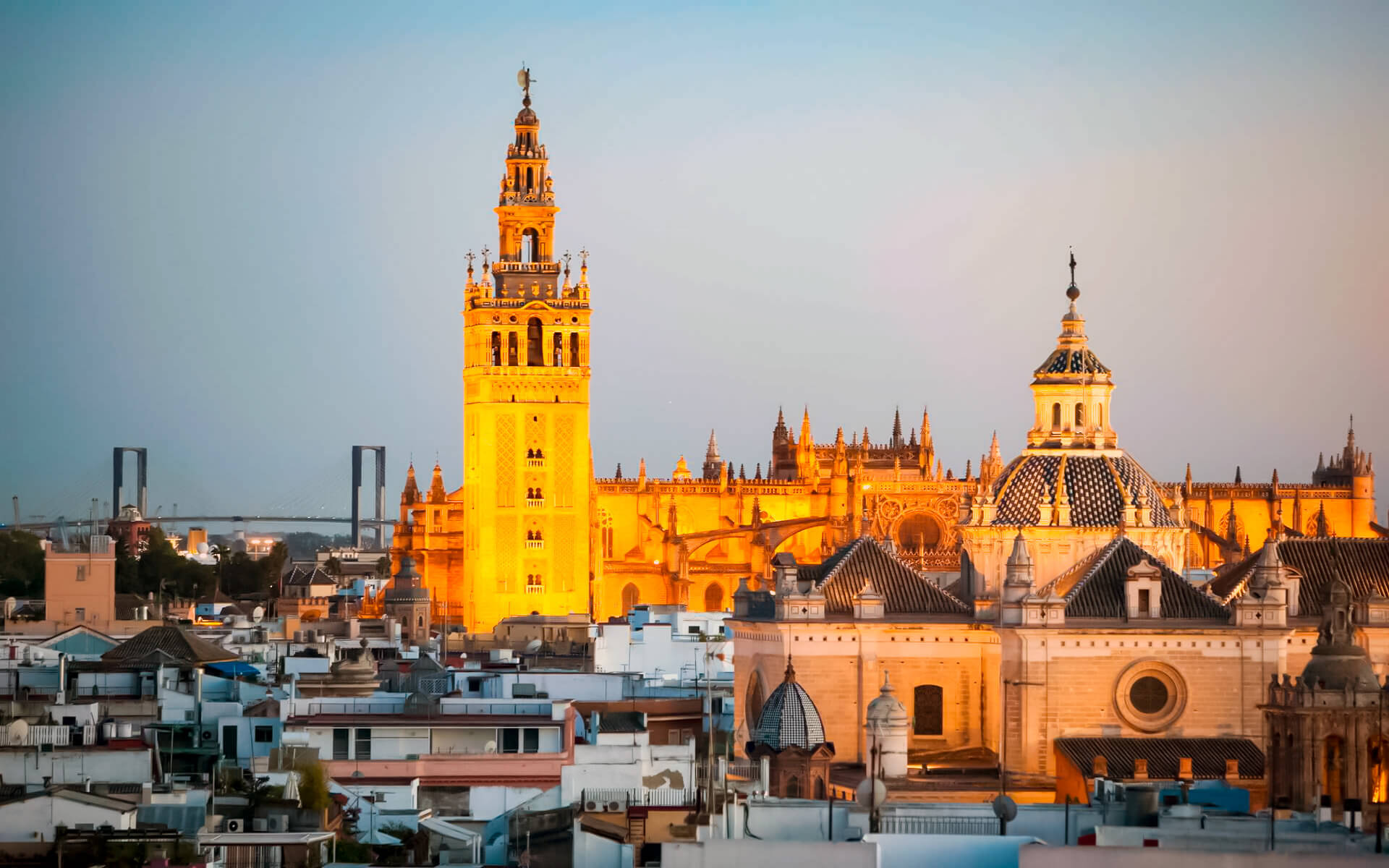Seville is the capital and biggest city of Andalusia and the province of Seville in Spain. It is located in the Guadalquivir River plain. The city’s residents are known as sevillanos (feminine form: sevillanas) or hispalenses, from the city’s Roman name, Hispalis. As of 2011, Seville has a municipal population of over 703,000 and a metropolitan population of approximately 1.5 million, making it the fourth-largest city in Spain and the 30th most populated municipality in the European Union. Its Old Town, the third biggest in Europe, is home to three UNESCO World Heritage Sites: the Alcázar palace complex, the Cathedral, and the General Archive of the Indies. The only river port in Spain is at Seville, roughly 80 kilometers (50 miles) from the Atlantic Ocean. Seville is also Europe’s warmest major metropolitan region, with July average high temperatures exceeding 35 °C.
Seville began as the Roman city of Hispalis. After the Muslim conquest in 712, it was renamed Ishbiliya. During Muslim administration in Spain, Seville was subject to the Caliphate of Córdoba before becoming the autonomous Taifa of Seville; afterwards, it was administered by the Muslim Almoravids and Almohads until being absorbed into the Christian Kingdom of Castile under Ferdinand III in 1248. Following the discovery of the Americas, Seville became one of the Spanish Empire’s economic centers, as its port monopolized trans-oceanic commerce and the Casa de Contratación (House of Trade) held authority, ushering in a Golden Age of arts and literature. Ferdinand Magellan set sail from Seville in 1519 on the first voyage of the Earth. The 17th century in Seville was the most spectacular blossoming of the city’s culture, coinciding with the Baroque era of European history; thereafter started a slow economic and population collapse as silting in the Guadalquivir drove the trade monopoly to shift to the adjacent port of Cádiz.
The twentieth century in Seville witnessed the Spanish Civil War, important cultural landmarks such as the Ibero-American Exposition of 1929 and Expo ’92, and the city’s election as the headquarters of the Autonomous Community of Andalusia.


